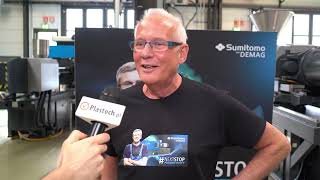As interest in biopolymers – plastics like polylactic acid (PLA) made from corn, sugar, starch and other natural raw materials – continues to grow, Clariant has been developing color and additive products for these renewable materials. In fact, as long ago as 1995, Clariant Masterbatches introduced a family of conventional color masterbatches for use with biopolymers. Today, RENOL-natur masterbatches combine all-natural colorants with biopolymer carrier systems to provide a completely renewable and biodegradable solution.
More recently, Clariant introduced another option for biopolymer products and packaging, which offers a broader choice of colors and additive functionality. New RENOL-compostable and CESA-compostable masterbatches meet recognized U.S. and European standards for compostability and ecotoxicity, including the harmonized EN 13432:2000 standard. Yet, because they incorporate conventional (non-natural) additives and pigments, the new masterbatches may be more economical and process- and light-stable in some packaging applications.
Making it easier for customers to use more post-consumer recycled (PCR) material, Clariant has developed masterbatches specially formulated to work with the slightly off-color PCR resins available. Recycled polyolefin plastic, for instance, normally has a grayish cast that can mute the overall impact of color in these materials. Using Enigma color and effects technology, designers can create packaging that not only has a better environmental profile, but also is attractive enough to compete for the consumer’s attention on store shelves.
PET is one of the most commonly recycled materials but it is also highly vulnerable to thermal, oxidative and hydrolytic degradation, which results in loss of molecular weight and deterioration of processing properties. Clariant’s CESA-extend additive masterbatches, however, can repair polymer chains that have broken due to degradation, allowing the recycled material to be used in higher-value applications including sheet and bottles.
CESA-extend is also being used in PLA biopolymer film and foamed sheet to reduce material consumption, create a lighter weight end product, and improve performance properties. Even in its virgin state, PLA is inherently low in melt strength. As it does in recycled PET, CESA-extend can improve the melt strength of PLA during extrusion, resulting in a larger more stable film bubble even at higher line speeds. The additive masterbatch also has been found to allow development of smaller and more resilient foam cells when used in the production of foamed PLA sheet.
“It is important to remember,” Alessandra Funcia concludes, “that none of this technology is important if it cannot be used in a way that yields a product that the market will accept and purchase. That’s why Clariant stands behind these products with global experience, knowledge and premium services. We are eager to partner with brand owners and major packaging converters in new application research any so that, together, we can make sustainability not only responsible but also profitable.”
Clariant launches new solutions
- Pages:
- 1
- 2



